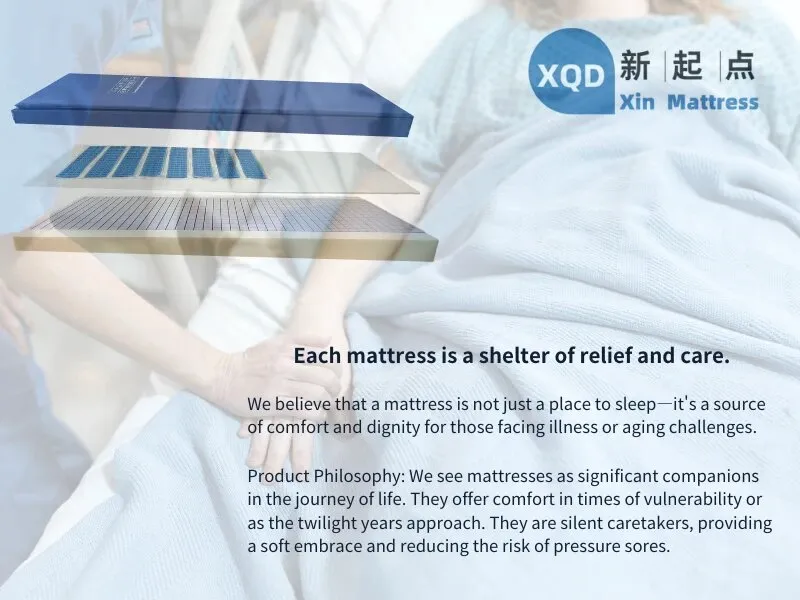Analysis of Comfort and Environmental Performance of Natural Latex and Coconut Foam Mattress
The contemporary sleep industry has witnessed a revolutionary convergence of natural materials with advanced engineering in the development of hybrid mattresses. Among these innovations, the combination of natural latex and coconut palm fibers (coir) has emerged as a particularly promising solution that addresses both comfort and environmental concerns. This composite structure gives rise to various specialized products including the coir foam mattress, and coir plus foam mattress, each offering unique benefits while maintaining ecological integrity. The coconut foam mattress represents a sustainable alternative to petroleum-based products, while the coir mattress for back pain demonstrates how natural materials can provide therapeutic support.

Coir Foam Mattress: Biomechanical Comfort Properties of Latex-Coir Composites
The fusion of natural latex and coconut coir creates a sleep surface with exceptional comfort characteristics that cater to diverse physiological needs. The coir memory foam mattress variant enhances this combination by incorporating viscoelastic properties while maintaining the breathability inherent to natural materials. Latex provides responsive bounce and pressure relief, conforming to body contours without the excessive sinkage associated with conventional memory foam. When paired with coir's firm support layer, as seen in the coir plus foam mattress, the composite achieves an optimal balance between cushioning and spinal alignment—a critical factor for the coir mattress for back pain applications.
Scientific analysis reveals that the coconut foam mattress excels in pressure distribution, particularly for side sleepers who experience concentrated forces at the shoulders and hips. The open-cell structure of latex combined with coir's natural resilience creates a surface that dynamically adjusts to movement while preventing pressure point buildup. Temperature regulation, another crucial comfort factor, benefits from coir's breathability which complements latex's inherent airflow channels. This synergy prevents heat retention common in all-foam designs, making the coir memory foam mattress particularly suitable for warm climates or hot sleepers who still desire contouring support.
Coir Foam Mattress: Microclimate Regulation and Sleep Hygiene Advantages
Beyond basic comfort, the latex-coir composite mattress demonstrates superior performance in maintaining a healthy sleep microenvironment. The coconut foam mattress naturally regulates humidity through coir's hygroscopic properties, absorbing and releasing moisture in response to body temperature fluctuations. This creates a significantly drier sleep surface compared to synthetic alternatives, reducing the risk of microbial growth and allergen accumulation. The coir plus foam mattress enhances this effect through strategic layer placement that optimizes airflow while maintaining structural integrity.
Clinical observations of the coir mattress for back pain reveal additional benefits in microclimate control. Patients report reduced nighttime perspiration and improved skin health, factors that contribute to both comfort and pressure ulcer prevention in therapeutic settings. The natural antimicrobial properties of both latex and coir fibers create an inherently hygienic sleep surface that resists dust mites, mold, and bacteria—a valuable characteristic for allergy sufferers. Unlike the coir memory foam mattress which focuses primarily on pressure relief, the latex-coir combination provides comprehensive microenvironment management that supports respiratory health and reduces irritants that can disrupt sleep quality.
Coir Foam Mattress: End-of-Life Biodegradability and Waste Reduction
The environmental performance of latex-coir mattresses extends to their disposal phase, addressing a critical weakness in the sleep products industry. Unlike synthetic foams that may persist in landfills for centuries, the coconut foam mattress features components that naturally decompose under appropriate conditions. Latex, while durable in use, biodegrades completely when exposed to microbial activity in soil, returning to basic organic compounds. Coir fibers similarly break down within several years, enriching soil structure in the process—a stark contrast to the coir memory foam mattress which may leave synthetic residues despite its natural components.
The coir plus foam mattress design facilitates disassembly at end-of-life, allowing separation of materials for appropriate recycling or composting streams. This design philosophy reduces mattress waste volume, which currently accounts for significant landfill space worldwide. For environmentally conscious consumers choosing a coir mattress for back pain, this biodegradable characteristic provides peace of mind that their therapeutic investment won't contribute to long-term pollution. Some manufacturers have implemented take-back programs that repurpose old latex-coir mattresses into landscaping materials or industrial padding, creating closed-loop systems that minimize virgin material requirements for future production.
Coir Foam Mattress: Market Position and Consumer Value Proposition
The latex-coir composite mattress occupies a unique niche that blends luxury comfort with environmental responsibility. Positioned above conventional innerspring and all-foam options but below premium synthetic hybrids, the coconut foam mattress delivers exceptional value through its combination of performance and sustainability. The coir memory foam mattress variant appeals to eco-conscious consumers who desire pressure relief without compromising on green principles, while the coir plus foam mattress offers a balanced solution for those seeking both support and temperature neutrality.
Consumer satisfaction surveys indicate particularly strong approval for the coir mattress for back pain among demographic groups prioritizing both health and sustainability. The tangible comfort benefits—including motion isolation, breathability, and orthopedic support—combine with intangible psychological rewards of owning an environmentally responsible product. This dual value proposition explains the growing market share of latex-coir hybrids despite higher price points, as consumers increasingly recognize the long-term economic benefits of durable, high-performance sleep systems that align with their ecological values. The transparency of natural material sourcing further enhances brand trust and customer loyalty in this product category.
Scientific interest in the coir mattress for back pain applications continues to grow, with clinical studies investigating optimal firmness levels and pressure distribution patterns for various musculoskeletal conditions. Simultaneously, environmental researchers are quantifying the carbon sequestration potential of coconut and rubber agroforestry systems that supply these mattress materials. These parallel developments suggest a future where sleep comfort technology becomes increasingly integrated with ecological restoration efforts, transforming the mattress industry from a source of environmental concern to a driver of sustainable development in tropical agricultural regions.
-
The Truth About "Orthopedic" Mattresses for Sore Back PainTin tứcAug.23,2025
-
Space-saving Benefits of a Single Mattress CubeTin tứcAug.23,2025
-
Eco-friendly Advantages of a Silicon MattressTin tứcAug.23,2025
-
How to Fix Sagging in a Special MattressTin tứcAug.23,2025
-
How Ambulance Stretcher Mattresses Reduce Pressure InjuriesTin tứcAug.23,2025
-
Best Cleaning Practices for a Hospital Mattress DoubleTin tứcAug.22,2025
-
Mattresses Designed for Back Pain ReliefTin tứcAug.08,2025

